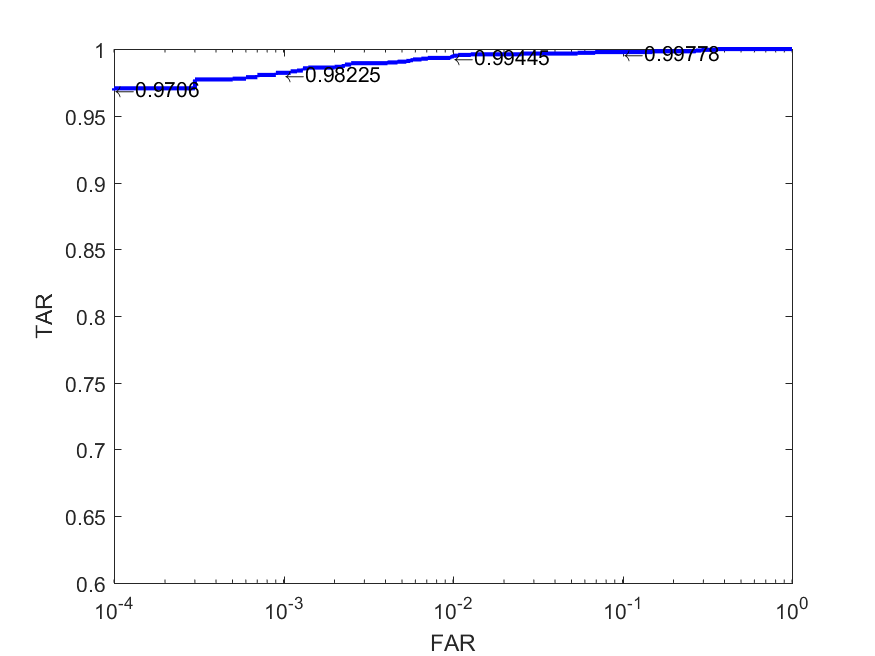A Good Practice Towards Top Performance of Face Recognition: Transferred Deep Feature Fusion
Unconstrained face recognition performance evaluations have traditionally focused on Labeled Faces in the Wild (LFW) dataset for imagery and the YouTubeFaces (YTF) dataset for videos in the last couple of years. Spectacular progress in this field has resulted in saturation on verification and identification accuracies for those benchmark datasets. In this paper, we propose a unified learning framework named Transferred Deep Feature Fusion (TDFF) targeting at the new IARPA Janus Benchmark A (IJB-A) face recognition dataset released by NIST face challenge. The IJB-A dataset includes real-world unconstrained faces from 500 subjects with full pose and illumination variations which are much harder than the LFW and YTF datasets. Inspired by transfer learning, we train two advanced deep convolutional neural networks (DCNN) with two different large datasets in source domain, respectively. By exploring the complementarity of two distinct DCNNs, deep feature fusion is utilized after feature extraction in target domain. Then, template specific linear SVMs is adopted to enhance the discrimination of framework. Finally, multiple matching scores corresponding different templates are merged as the final results. This simple unified framework exhibits excellent performance on IJB-A dataset. Based on the proposed approach, we have submitted our IJB-A results to National Institute of Standards and Technology (NIST) for official evaluation. Moreover, by introducing new data and advanced neural architecture, our method outperforms the state-of-the-art by a wide margin on IJB-A dataset.
PDF Abstract


 CASIA-WebFace
CASIA-WebFace
 IJB-A
IJB-A
 VGG Face
VGG Face